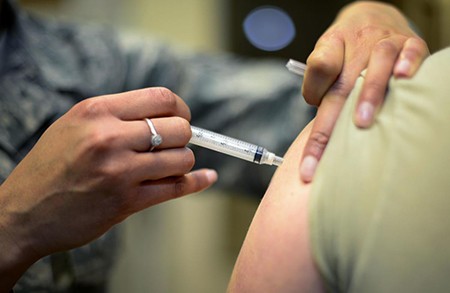Winter approaches in Colorado with a familiar companion in tow: concerns about increases in the number of viral respiratory illnesses. The Colorado Department of Public Health and Environment (CDPHE) recently made it easier to track cases of COVID-19, influenza, and respiratory syncytial virus (RSV) on a single dashboard.

The site includes regularly updated information on hospital admission rates, emergency department visits, and positivity percentages from lab testing for each of the three viruses — all reachable from a single web page. Prior to the integrated dashboard, CDPHE provided data on COVID-19 separately from data on the other respiratory viruses.
In addition, the site links to a recently created surveillance dashboard that displays data from wastewater tested for the presence of the viruses at 20 facilities around the state, along with a detailed list of FAQs about the program. The volume of viruses shed into wastewater can provide an early indication that a rise in the number of viral respiratory infections may be imminent.
A new single source for respiratory virus data
State officials created the unified dashboard so people can more easily see the relative levels of each virus in a standard way that is easier to navigate.
The dashboard is an important and convenient new tool for members of the public interested in monitoring the risk of respiratory illness in their community and making informed decisions about protecting their health, said Dr. Michelle Barron, senior medical director of infection prevention and control for UCHealth.
“It’s one-stop shopping, which is amazing,” said Barron, who is also a professor at the University of Colorado School of Medicine on the Anschutz Medical Campus.
“COVID-19, influenza and RSV can be very impactful, depending on the population at risk. All three have vaccines. Health literacy is important, and part of having health literacy is having access to information in real time. Now there is one dashboard you can go to if you are trying to decide, for example, ‘do I get my flu shot now’? It just makes it easier for people to see what is circulating in the community and make decisions based on that.”
Barron said the wastewater data provide clues and early warnings about “the burden of disease” in a community. That is important, she said, because it frees public health professionals from relying solely on the results of people getting tested for infections. She noted that during the COVID-19 pandemic, wastewater testing for the SARS-CoV-2 virus helped communities predict and prepare for upcoming surges in hospitalizations.
The same goes for testing wastewater for influenza, RSV and another dangerous pathogen, Enterovirus D68 (EV-D68), CDPHE experts note on the wastewater surveillance page.
“These pathogens may be shed in the wastewater before someone shows any symptoms, and individuals without symptoms can also shed virus particles. Testing wastewater provides complementary surveillance data to existing systems,” state health experts note.
The wastewater data on the dashboard allow an individual to drill down to a specific monitoring facility to see if viruses have been detected, and if so, where, Barron added.
“It’s important to get down to the actual locations because our population density varies significantly in Colorado,” Barron said. “If I live in Steamboat Springs, does it matter what they are seeing in Denver? Maybe, but maybe not.”
Overall, the redesigned dashboards will benefit both public health professionals and the public, Barron concluded.
“I think it’s fantastic,” she said. “I think when (state health experts) decided to create the new dashboard, it was a way of boosting health literacy, which is one of their many goals.”
Editor’s Note: The Colorado Times Recorder occasionally posts articles, like this one, from UCHealth Today, which is published by UCHealth, the hospital associated with the University of Colorado School of Medicine. Our goal is to provide as many people as possible with accurate information about medical issues that are poisoned by misinformation, particularly as discussed on social media and talk radio.
CORRECTION 11/22: This article originally had the wrong author.




